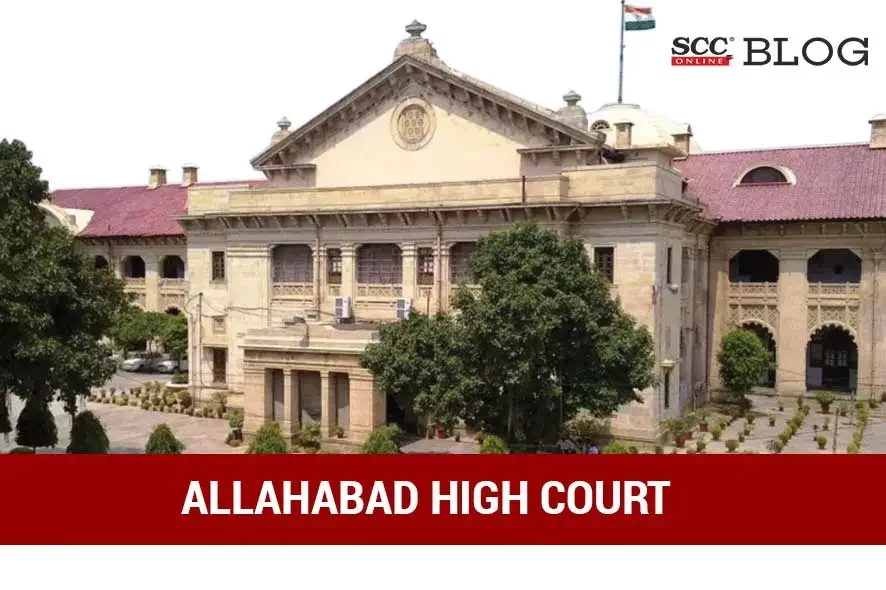Allahabad High Court: In an application filed under Section 482 of the Code of Criminal Procedure, 1973 Vinod Bihari Lal, Director of Sam Higginbottom University of Agriculture, Technology and Sciences (‘SHUATS’) seeking to quash the proceedings for offences under Section 2 read with 3 of Uttar Pradesh Gangsters and Anti-Social Activities (Prevention) Act, 1986 (‘Act, 1986’) JJ. Munir, J. held that violence in one form or the other is not sine qua non for a group of persons to qualify as a gang under Section 2(b) of the Act of 1986. Thus, the Court dismissed the application.
In the case at hand, the police came to know that Vinod Bihari Lal is a leader of an organised gang. This gang is proficient in the commission of economic crimes through fraud and deceit, being offences of the kind, described in Chapters XVI, XVII and XXII of the Penal Code, 1860 and by perpetration of such offences, the members of the gang gain personal, material and pecuniary benefit for themselves. They do so by tampering with and forging documents. By commission of such offences, they accumulate wealth and because of their fear and terror amongst members of the public, no one comes forward to lodge a report against them or muster courage to testify in Court. The gang chart has been approved by the District Magistrate.
Vinod Bihari Lal submitted that none of the offences charged against him, neither involve violence nor disturbance of public order. Further, there is a violation of Rules 5(2), 5(3), 16 and 17 of the Uttar Pradesh Gangster and Anti-Social Activities (Prevention) Rules, 2021 vitiating the gang-chart.
The Court refer to the provisions of Section 2(b) of the Act of 1986 and observed that violence or disturbance of public order alone are not the sine qua non of a gang. It postulates a group of persons, who either acting singly or collectively, employ violence, or threat or show of violence, or intimidation, or coercion, ‘or otherwise’ with the object of :
(i) disturbing public order; or
(ii) gaining any undue temporal, pecuniary, material; or other advantage for himself or any other person, indulge in anti-social activities, enumerated in clauses (i) to (xxii) of subsection (b) of Section 2 of the Act of 1986.
Further, the Court reiterated that a statute should be read and understood according to its plain grammatical meaning, unless that construction leads to an absurd result, or defeats the object and the very purpose of it.
The Court said that Section 2(b) of the Act of 1986 would indicate that with object of disturbing public order or gaining any undue temporal, pecuniary, material or other advantage for himself or any other person, a group of persons acting singly or collectively may act by violence or threat or show of violence, or intimidation, or coercion or otherwise. Thus, the employment of the words ‘otherwise’ after the word ‘coercion’ indicates that the twin object of disturbing public order or gaining any undue temporal, pecuniary advantage etc. is the hallmark of a group acting through a member, singly or collectively, to qualify as a gang. The employment of the word ‘otherwise’ after ‘coercion’ is not to be read ejusdem generis with the preceding word like coercion, intimidation etc. Rather, the employment of the word ‘otherwise’ shows that the group may act in any manner to achieve the object of disturbing public order or gaining any undue temporal, pecuniary advantage etc. Thus, the Court held that violence in one form or the other is not sine qua non for a group of persons to qualify as a gang under Section 2(b) of the Act of 1986.
Further, it was observed that at the stage of approving the gang-chart based on materials placed, the competent Authority should satisfy itself that a case for prosecution under the Act of 1986 is made out. Collection of further materials to prosecute follows at a later stage when after registration of the case, investigation commences. Therefore, any fallacy in the mode of approval of the gang-chart would not be of much relevance, where the case is already up for trial after conclusion of investigation. This is not to say that the gang-chart betrays any violation of the Rules. Thus, the Court did not find any good ground to quash the impugned proceedings.
[Vinod Bihari Lal v State of UP, 2023 SCC OnLine All 143, Order dated 19-04-2023]







